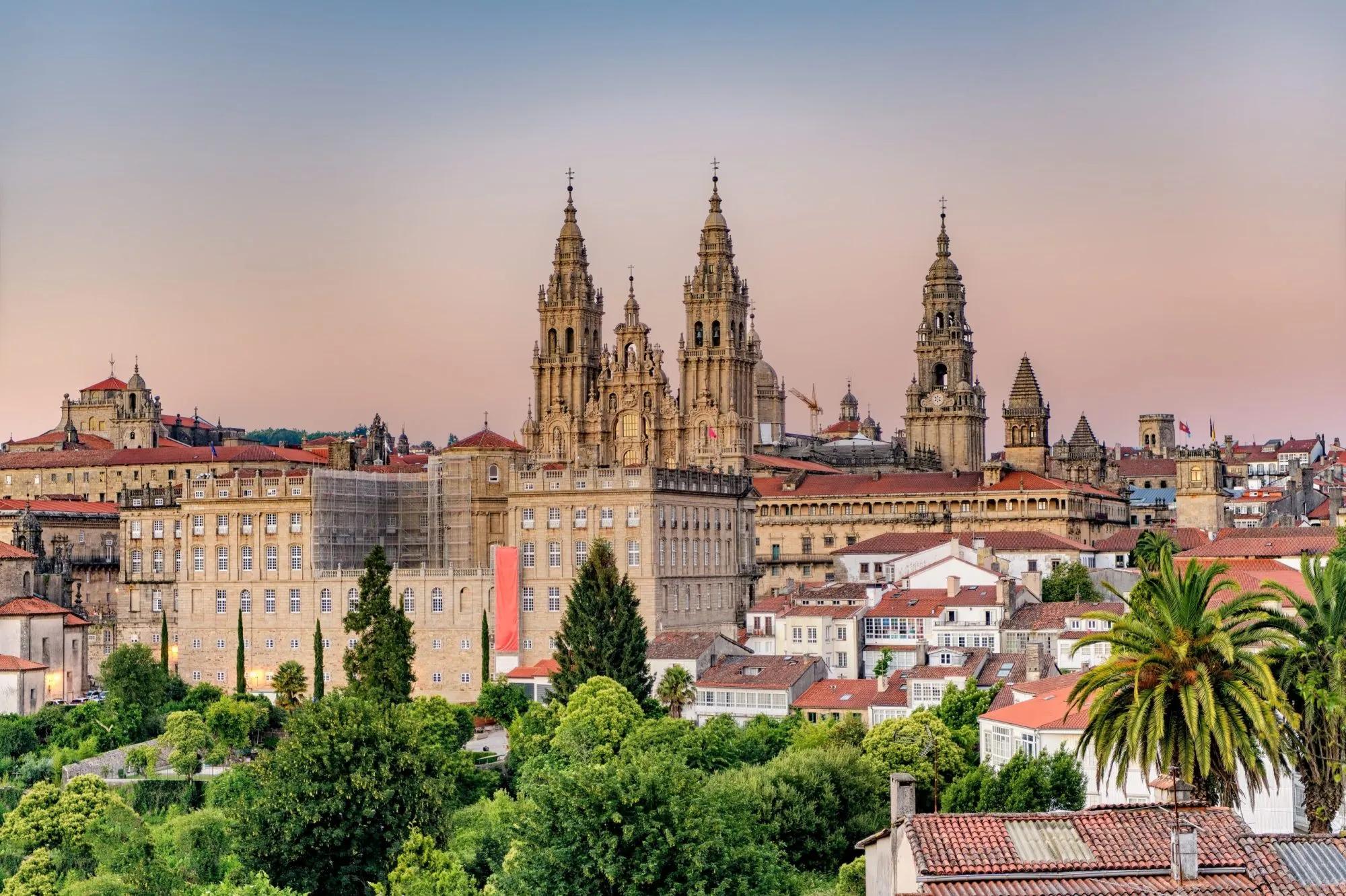24 km and 350 m of elevation gain / 380 m of elevation loss
Vigo to Santiago de Compostela
7 days / 6 nights
|











Starting point
Vigo
Finish point
Santiago de Compostela
Season
From March to November
Technical level
1/5
Fitness level
3/5
Tour type
Pilgrimage
Starting point
Vigo
Finish point
Santiago de Compostela
Season
From March to November
Technical level
1/5
Fitness level
3/5
Tour type
Pilgrimage
- Explore Vigo's vibrant streets and savor its renowned seafood delicacies
- Wander through Pontevedra's medieval heart, alive with history and culture
- Relish Arcade's famous oysters, a taste of local culinary tradition
- Soak in the tranquility of Galicia's lush eucalyptus forests
- Uncover the legends of Padrón, steeped in the lore of St. James
- Experience the spiritual culmination at Santiago de Compostela's majestic cathedral
Itinerary of the trip
FREE ITINERARY
Get Your Travel Itinerary
Loved the itinerary? Enter your email below, and we'll send a copy straight to your inbox.
What’s included in the price?
Self-guided
NOT INCLUDED
OPTIONAL EXTRAS
What to bring to the tour
- Hiking shoes/boots
- 25 to 35-liter backpack
- Base layer
- Sports T-shirts
- Hiking shorts
- Hiking water-repellent pants
- Waterproof jacket
- Midlayer
- Sports socks and underwear
- Leisurewear for evenings
- Shade hat/cap
- Sunscreen
- Sunglasses
- Hiking poles
- ID card or passport
- Snacks
- Cash
- Water bottles or hydration pack
- Toiletries
Spanning a shorter but equally enriching distance, this section of Camino Portugues Coastal is perfect for those seeking a more condensed Camino experience.
It offers a scenic exploration, from the tranquil eucalyptus forests and quaint rural villages near Arcade to the lively medieval streets of Pontevedra.
The path leads pilgrims through picturesque hamlets like Tivo and the spa town of Caldas de Reis, culminating in the spiritual and architectural magnificence of Santiago de Compostela.
This route highlights the seamless blend of natural serenity and historical richness. Walk across the historic Ponte Sampaio, admire the guiding statue of Saint James in Lombo da Maceira, and feel the historical significance of Padrón, where the journey of St. James's body to Santiago is said to have begun.
Our commitment to your journey encompasses comfortable accommodations, efficient luggage transfers, and ongoing support, ensuring a hassle-free pilgrimage.
Equipped with comprehensive guides and GPS navigation, your journey from Vigo to Santiago will be entirely stress-free.
Can you hear the coastal whispers? It's up to you to answer them!
Start planning today!
The sooner the better - guaranteed availability and best prices if you don't wait for too long.
Frequently Asked Questions
Ratings & Reviews

5.0 average rating

We had a lovely hike today with our guide Klemen. He personalized the tour on our needs and interests, so that we saw places we wouldn't without his experience. The hike was a little bit slippery after the rain from the last days and it went a lot upwards, but it was totally worth it! Thanks again :)


We had an incredible trek! The itinerary was exactly what we wanted, communication was excellent with the company. They were so helpful throughout the planning process and when we were in country. Slovenia exceeded our expectations. We can't recommend them enough!
We had an incredible experience booking our Dolomites hiking adventure through Hut-To-Hut Hiking Dolomites (one of the many companies operated through World Discovery). Traveling all the way from Hawai‘i, we were initially a bit hesitant about booking with a company based in Slovenia, but everything was flawless. Even factoring in the 12 hour time difference between Hawai'i and Europe, their communication was fast and professional. The planning materials were thorough and incredibly helpful including detailed daily hiking routes, suggested scenic stops and snack breaks at rifugios along the way, an app with offline downloadable maps customized to our routes, and clear hiking and safety guides. Every rifugio they booked for us was fantastic: clean, welcoming, well-located, and full of charm. They booked us at a 5-star hotel for the last night and the spa treatments were heavenly after days of hiking. The post-hike airport transportation was seamless, and we were especially grateful to have their help booking so close to peak summer season. There’s no way we could have secured such great rifugios on our own, each one they chose was a highlight. We felt fully supported throughout the trip, even though it was self-guided. They provide a 24/7 Whatsapp number which was nice to have in case of emergencies. We highly recommend Hut-To-Hut Hiking Dolomites for anyone looking to hike the Dolomites without the stress of figuring out all the logistics yourself. Would book with them again in a heartbeat.
Similar Products
All available guidance options
Self-Guided
On a self-guided tour, you explore a destination independently, following a pre-planned route and itinerary without a guide but with all necessary information and accommodation bookings provided in advance.

HASSLE-FREE
We handle itineraries, accommodations, and anything else you prefer not to deal with, so you can enjoy a carefree hike.
.svg)
TRIED & TESTED ADVENTURES
Only the best of Camino de Santiago, cherry-picked by our local team with an in-depth knowledge of the region.

SELF-GUIDED TRAVEL
Explore independently and with confidence while we keep everything running from behind the scenes.
TRUSTED BY MANY
Since 2014, we have taken care of thousands of happy customers, making it our mission to put your satisfaction first.























.jpg&w=3840&q=75)